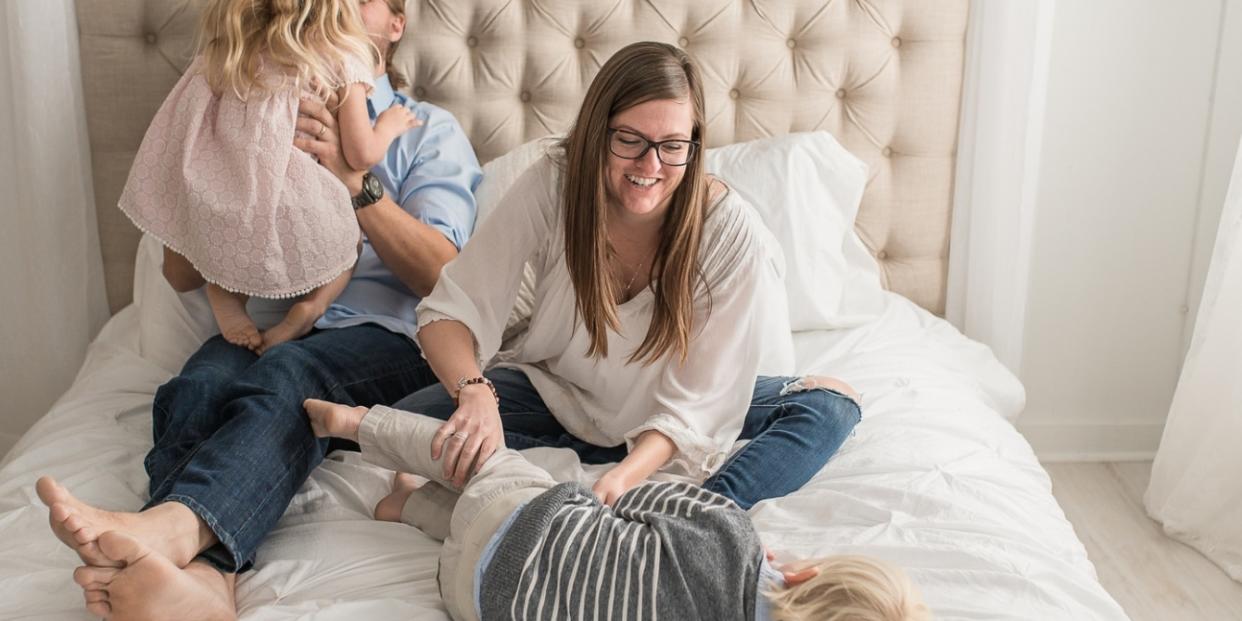6 ways we’re creating a gender-inclusive home for our children

- Oops!Something went wrong.Please try again later.
My partner and I are intentional about creating an inclusive home for our 5-year-old boy and 2-year-old girl so our children will feel safe and supported to be their true self. There is a range when it comes to how families create inclusive homes. Some families are raising their children with complete gender neutrality. We are not one of those families. Our children have names which reflect their sex at birth and my daughter’s room is wallpapered with pink flowers (it’s just so pretty!).
But here are some ways our family is practicing being gender-inclusive.
6 ways we’re being gender-inclusive (and how you can do it too)
1. Understanding gender pronouns
Something we are trying to get better at is being aware of pronoun use and practicing the use of gender-neutral pronouns. This is something that is easy to practice as a new parent out meeting other parents with babies. Think of the number of times you’ve found yourself asking another parent about their baby and then getting stuck on what pronoun to use so you inevitably ask, “Do you have a boy or a girl?”.
Next time, you might try using the pronoun they/them/their. For example, “How old are they?,” “What time do you put them to bed?,” or “What is their nap schedule?.” Parents will respond with the pronouns they are using with their child, and you can follow suit.
Something I am also practicing is not placing value on the gender of my own children when they meet someone new. I have challenged myself to not correct people if they call my daughter, “he/him”. For now, her gender identity is as I assume it to be so, who am I to be stuck on making sure people use the pronoun I’ve assigned. Some of you may also be new to the fact that there is a growing category of neopronouns that are used as alternatives to they/them/theirs pronouns. Our children will grow up in a world of pronoun inclusivity and they will expect you to respect their own identity and those of their peers.
2. What does 2SLGBTQI+ stand for?
Being aware of inclusive terms and language is an important part of being an ally. When I was first aware of inclusive terms, LGBTQ was the standard acronym. This has now expanded to be more inclusive, which may continue to evolve over time. But, for now, the term most often used is 2SLGBTQI+.
2S: Two-spirit
L: Lesbian
G: Gay
B: Bisexual
T: Transgender
Q: Queer
I: Intersex
+: Additional terminologies
The organization, Egale, does incredible work in the space of 2SLGBTQI+ rights and provides resources on terms and concepts as well as information around ongoing 2SLGBTQI+ human rights issues.
3. Proper terminology of body parts
My daughter is adamant she has a penis. Adamant.
I do not correct her by saying, “No, girls have a vagina and boys have a penis.” I simply state, “This body part is called a vagina.”
Being a family that talks openly about body parts is an important element of creating an inclusive space for children. If your child grows up feeling their assigned body parts do not match their gender identity, you want to make that conversation as easy as possible for them. If you have used language that normalizes the difference between a body part and gender identity, you have opened the door for your children to feel safe and seen.
4. Read inclusive books
Reading books that include diverse people, cultures and experiences is an important exercise for both nurturing inclusive behavior in our own children as well as ensuring systemically minoritized children feel seen. There are many beautiful books out there that represent diverse families, diverse sexual orientations and diverse gender identities.
Some of the books my son would always reach for as a little one were
“Julian is a Mermaid,” “My Two Dads and Me,” and “Marlon the Bunny.”
Here is a more extensive list of books for your little one that makes visible gender diversity.
5. Celebrate Pride
This year we made the decision to hang the Progress Pride Flag outside our home.
This prompted my five-year son to ask about the need for Pride. We talked about Marlon the Bunny (from his book) and how the Stink Bug said he couldn’t marry another boy bunny. How there are people in the world who are sometimes made to feel bad for being who they are. How we hang this flag to show we support people to love, and be, whoever they want.
6. Choose gender-neutral toys and play
Provide toys that have traditionally been provided to only one sex. Since my son was young, our play space has included a toddler kitchen, toddler cleaning tools, a dollhouse, dolls and doll clothing, cars, trucks, trains, robots and dinosaurs. Both our children are encouraged to play with toys that would traditionally be provided to the opposite sex.
You can also provide gender-neutral toys, which are proven to have many developmental benefits. These toys allow children to break free of gender stereotypes in play and pursue their own interests. If you are looking for gender-neutral toys with the benefits of being age and development specific, you can check out the toy rental subscriptions from Toy Exchange Club.

